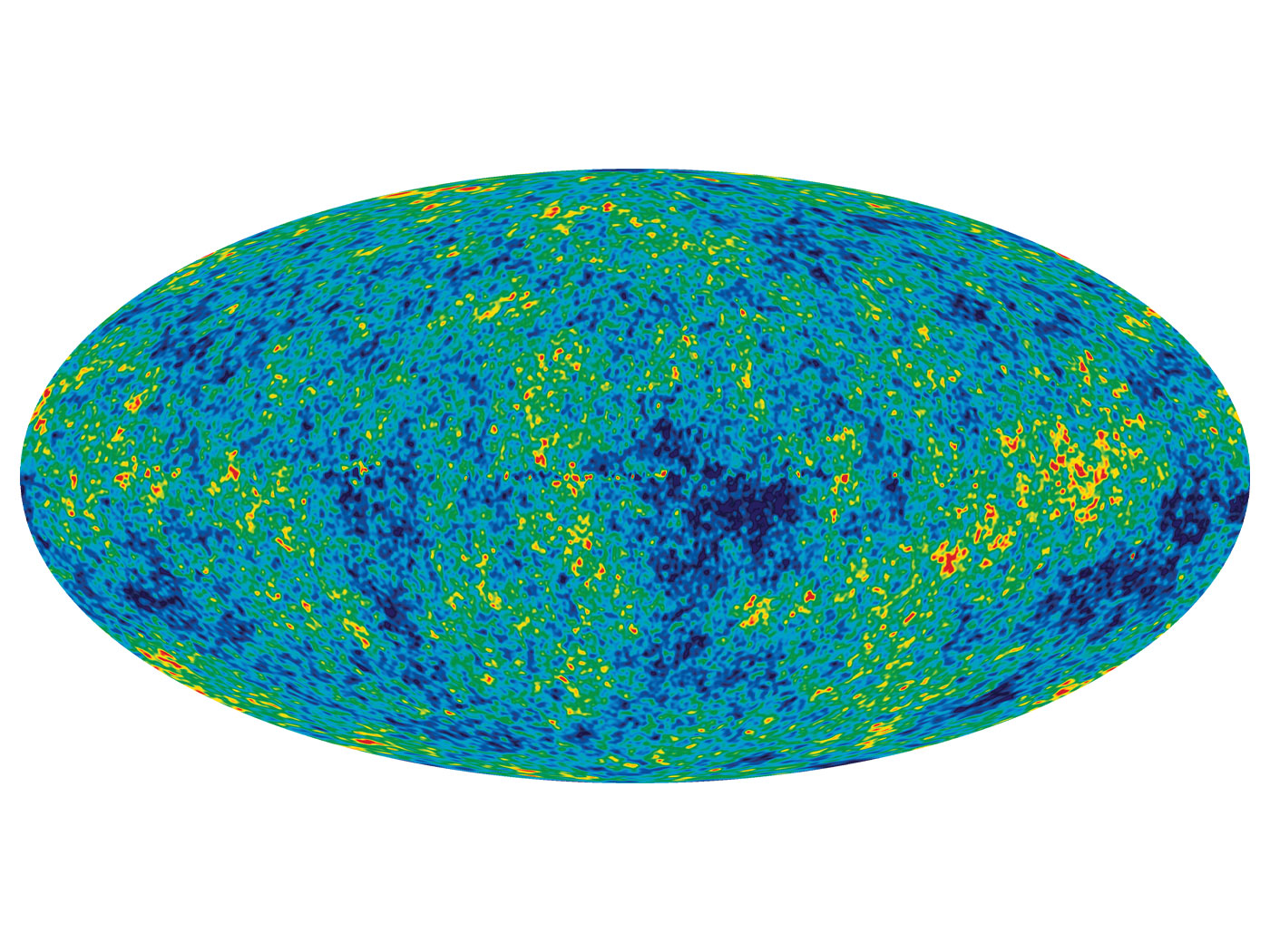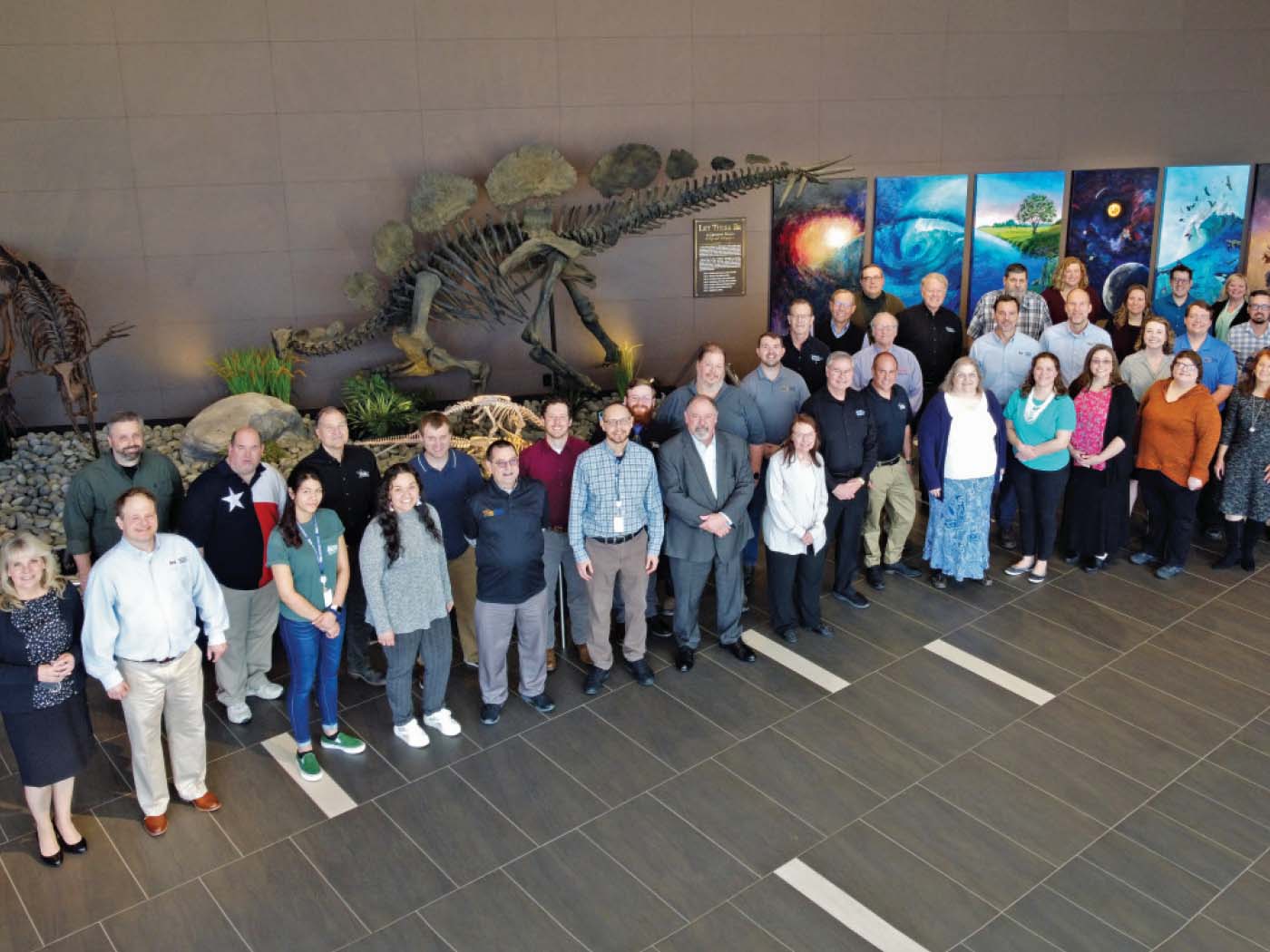Suppose someone walks through their neighborhood and spies a new construction site for a custom-built home. Concrete has just been placed for the foundation. About how long ago did the project start?
Simply looking at how much work is in place would probably lead to a wrong answer. Actually, the project began--possibly years ago--within the mind of the designer. The designer's thoughts set the starting point, direction, and goal. His plan overrides everything. A radical new way to begin thinking about all constructed entities is that they mutually consist of items made out of matter, the material part, and their information for assembly, the immaterial part.
The new home's immaterial part consists of the designer's thoughts, concepts, ideas, and plans for achieving a specific goal.1 What is amazing is that even though the designer's thoughts are not composed of space, time, or matter, they establish the initial context for which all additional information and all of the material parts will fit together and make sense.
For instance, this sentence first existed immaterially as a thought in a mind that sets the context for only adding letters as they fit to make a meaningful word. More words are added only as they fit the intent of this thought--which was to illustrate that discrete letters and words are meaningless unless organized in the context of a thought. The designer's ideas become the framework that is used in the material realm to direct all interactions of material things. Thus, ideas are incorporated into the home just as tangibly as lumber.
So, one of the earliest statements in a conversation about design in nature could be:
If I were to ask you to give me two pounds of your ideas, we know that cannot happen because even though your ideas are real things, they are also immaterial. Although thoughts are immaterial, they are crucial to any construction project since they set the starting point, direction, and goal. We need to find the best explanation for the immaterial information directing production of the diversity of life on earth.
Plans and Specifications Always Indicate Design
Man-made items are constructed following directions called plans and specifications. Specifications are a unique kind of writing designed to convey intent. They are written instructions that set advance constraints on precisely what, how, and when particular materials will be used. Plans show geometric details of where materials are placed (though there is overlap between the two). Together, they must be detailed and selective enough to accurately and unambiguously communicate intended fabrication information to obtain all the product's features.
Writing specifications and drawing plans can be difficult work. Designers are forced to initially build the project in their minds. They must visualize numerous details, and then clearly represent everything in that mental picture in words and drawings--a daunting task at any time, but especially for situations where no prototype even exists.
It is important to highlight two points about specifications. First, they are as close of a representation of the designer's thoughts as possible--but they are not the thoughts themselves. Thoughts exist independently of the paper or programs which convey them. Second, when plans or specifications exist for something, they are--without exception--a sign of conscious design. Why? They reveal an intentional state that is characteristically restrictive. It selects in advance particular attributes for an intended purpose--which is the exact opposite of blind natural processes that yield random, ill-defined, piecemeal conglomerations of whatever is available.
So the secret to great architecture is not in the drawings, but in the mind of the architect. When evolutionary biologists determine the structure or sequence of DNA, they believe they uncover the secret of life.2 Disregarding the fact that information is immaterial, they fixate on the material of DNA. But they are incorrect. Functioning just like specifications, DNA is manipulated by specialized proteins that enable it to transfer, transcribe, store, and recall information for building a living thing--but it is not the information. The real secret of life is the information.
Genetic Specifications Are Best Explained by Design
The evolutionist's explanation for the informational content in the first DNA (or RNA) relies initially on a random letter-by-letter increase. There are four letters in DNA or RNA language, and each one of the four letters has an equal chance of being the next letter in a genetic word. Building sequences of genetic words, which would constitute one gene, will ultimately be equivalent to writing a long paragraph in a book. Evolutionists insist that there was no plan to ensure the correct placement of any genetic letter or word, but that, over time, the first gene's informational content--the same as hundreds to thousands of meaningful words--would inevitably arise.
Creationists explain that genetic information originated in a thought that set the starting point, direction, and goal for a product. The thought was the scaffold upon which everything was built. It became the outline for the specific order found in genetic words--meaning that every letter and word is only valuable as it fits in the context of all of the other words, which themselves are constrained to satisfy the thought's purpose for the gene. Immaterial information and material DNA were created in creatures at the same time. Intelligent behavior is recognized by key features of a specification: (1) selecting (2) in advance (3) exact attributes (4) for a purpose.
Learning a Short Example
It is possible that you may have a conversation with someone familiar with evolutionary beliefs. They may assert that the inability to identify the original source of biological information is just a gap in current scientific knowledge. Thus, it is arguing from ignorance to insist God fills the gap. Fortunately, some people who used this response have actually changed their minds following education as to why that thinking was more argumentative than analytical.
First, there is no ignorance. In universal human experience, when plans and specifications are encountered--meaning the causal record is known--they are always a product of intelligence. It is irrelevant that the operation of many processes is yet unknown. The source of information is not among them.
Second, all known natural processes oppose the notion that random genetic mutation and natural selection can generate information. Experiments show that randomly choosing letters one by one with no context to guide selection always generates nonsense regardless of how much time is utilized. (Be prepared for the evolutionist's comeback pushing the omnipotence of natural selection to set context and choose letters.3) So the very first specified genetic information capable of generating various physical traits cannot even get going.
Finally, when intelligent thought is placed head-to-head with random mutation/selection as a basis for information, intelligent thought has more scientific consistency to account for biological specification. Intelligent thought does not depend on mutation/selection being a poor explanation in order for it to be a better explanation.
Pulling It All Together
Many people will be amazed when they realize that their thoughts cannot be reduced to biology or even to atoms. After that fact captures attention, proceed by saying something like:
Since information is required for life but is immaterial, evolutionists have, thus far, failed to explain its origination strictly in terms of matter. They resist the fact that information always comes from a mind. Designers first build a project in their minds, then details go on paper. Specifications select exact features in advance of construction, reflecting intention and purpose--conclusive evidence of intelligent thought. Historically, every time people observe plans and specifications, their source is intelligence. So then, recognizing that the instructions to build a bird contain more information than the plans to build a jetliner, is it reasonable to believe that--only for the case of evolution--the laws of information are violated?
Let me suggest a better explanation that does not fight the facts. If you really want a refreshing way to contemplate graceful architecture, whether man-made or in nature, expand your appreciation to consider how much information was behind selecting and organizing those great building materials. Everything you see is actually fitted on a structure--a framework of unseen thoughts within a wonderful mind. Now, just conceive of the enormity of the mind that can visualize all at once all details for all life with all of their ecological interactions and write the specifications into a genetic alphabet consisting of only four letters. The Bible says that mind is the Lord Jesus Christ's and its infinite greatness is clearly seen by the things He has made (Romans 1:20).
References
- Part of the thinking process, and a fundamental property of intelligent behavior, is creating ideas, intentions, forecasts, and goals. Yet, thus far, these things have not been shown to reduce down to the purely biological level since no coherent neural basis can account for them strictly within the interaction of action potentials between neurons. Some materialists question whether intentional states of the mind are even real. See Lycan, W. G. and G. Pappas. 1972. What is eliminative materialism? Australasian Journal of Philosophy. 50: 149-59; Rorty, R. 1970. In Defense of Eliminative Materialism. Review of Metaphysics. 24 (1): 112-121.
- "We have discovered the secret of life." National Centre for Biotechnology Education. Posted on ncbe.reading.ac.uk, accessed March 31, 2010.
- Guliuzza, R. 2010. Natural Selection Is Not "Nature's Design Process." Acts & Facts. 39 (4): 10-11; Guliuzza, R. 2010. Natural Selection Is Not "Nature's Intelligence." Acts & Facts. 39 (5): 10-11.
* Dr. Guliuzza is ICR's National Representative.
Cite this article: Guliuzza, R. 2010. The Mind Behind the Design. Acts & Facts. 39 (6): 10-11.

















